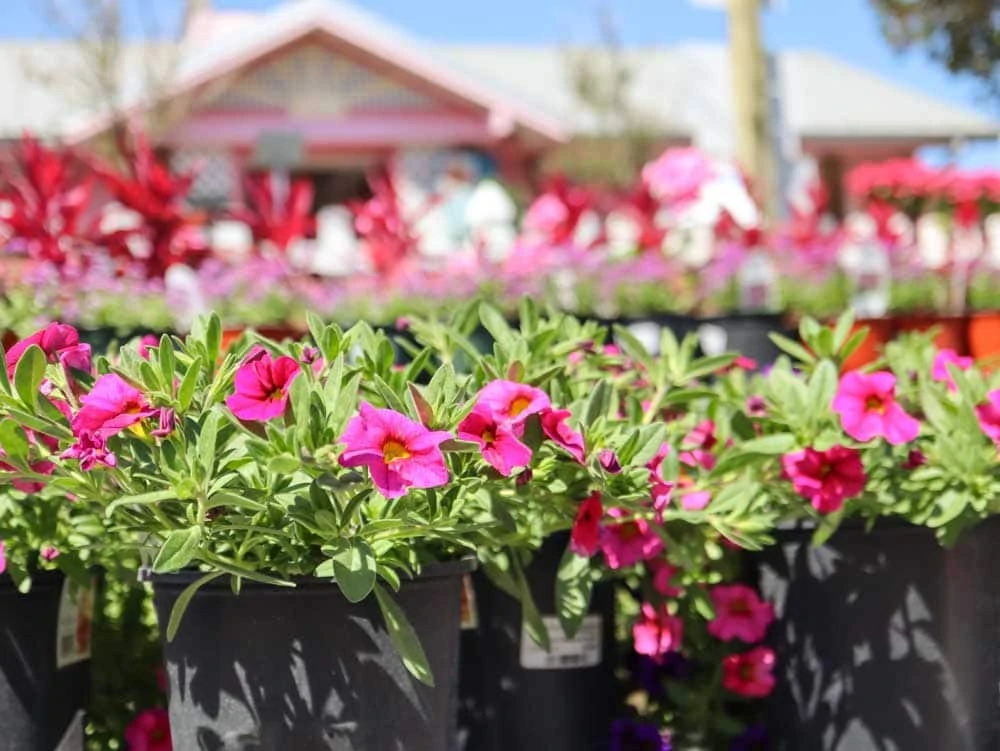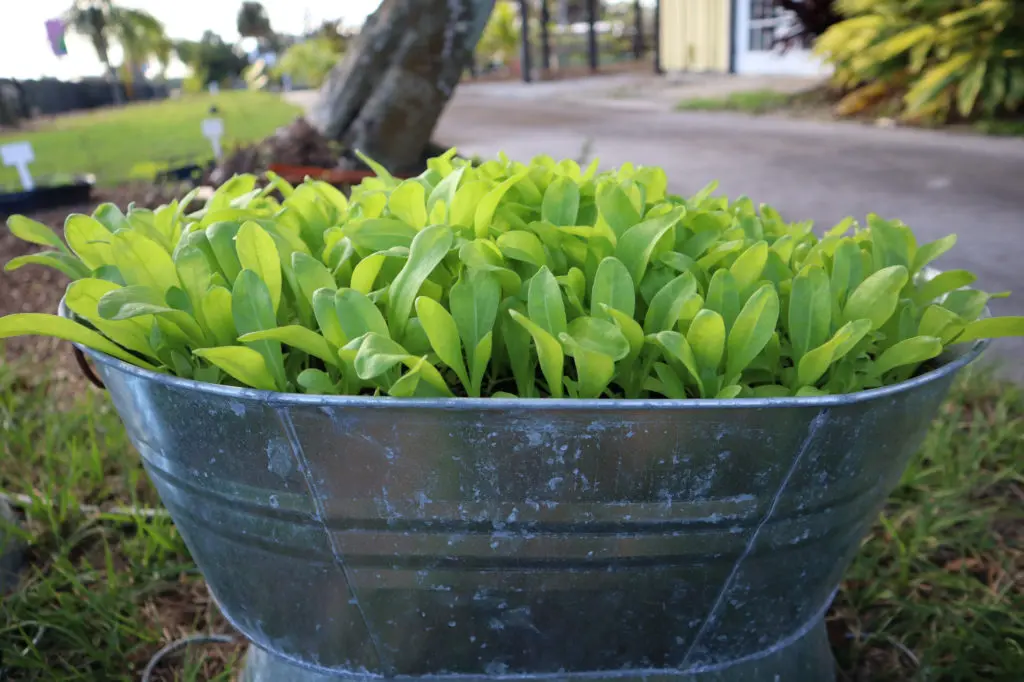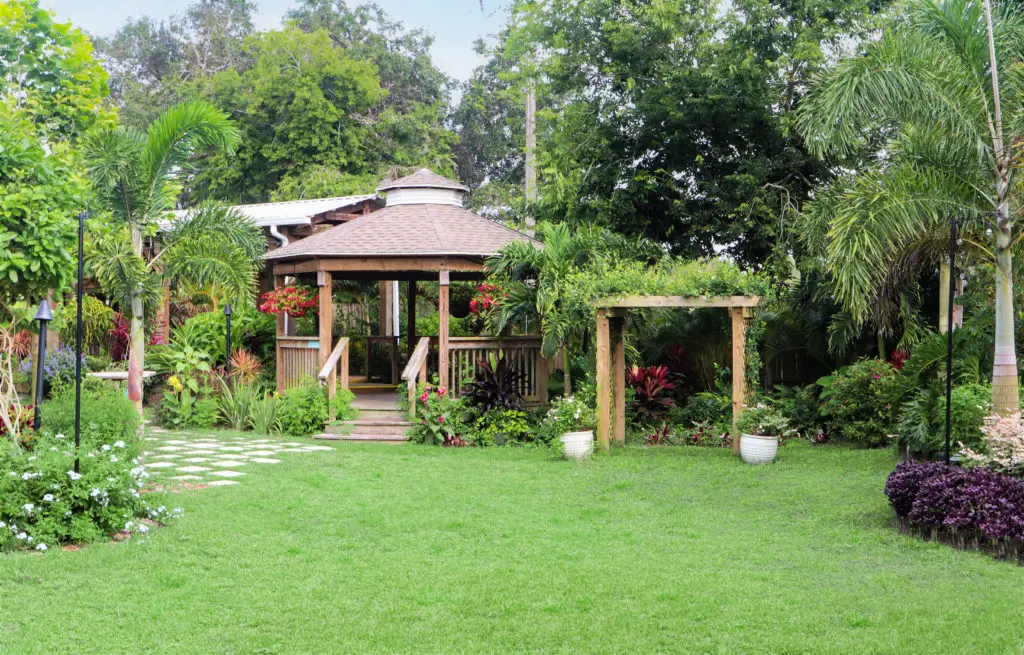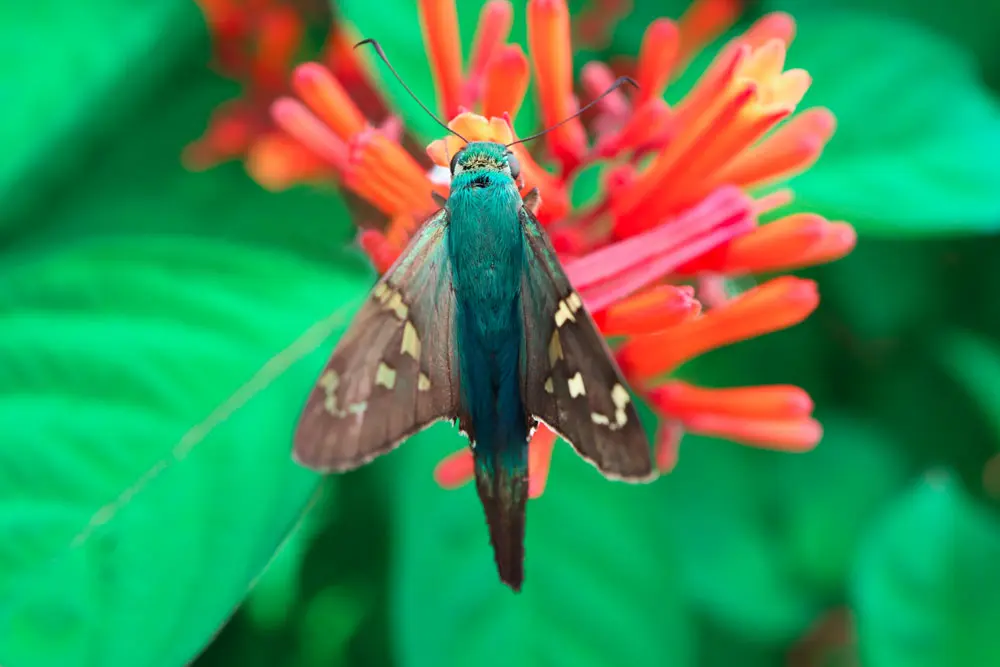by Amanda Rose Newton
The more one learns about plants, the more fascinating they become.
Plants are more complex than what meets the eye (photosynthesis) and yet, so simple in their needs. If you provide plants with soil full of nutrients, water to help chemical reactions, and carbon dioxide and sunlight to fuel sugar production you will be rewarded with shade, flowers, and fruit.
A plant’s lifecycle also plays a key role in a healthy landscape and deciding between annuals and perennials depends on your goals, time, and patience.
Annuals Vs. Perennials: What’s The Difference?
Annuals
Annuals are “one and done”, meaning they go from seed to plant and back again in a single season. Usually, these are started from seed but they can also be purchased as small plants. Once the temperature dips (or in our case, gets really hot) they peter out and with no plans for a sequel.

Pros:
Annuals flower all season long, which is why they are the window box staple. If you have a small space to plant in, choose annuals and you can simply change them out each season!
If you like to change things up, replace your annuals each season for a different display that corresponds to every holiday or mood. Consider annuals the bangs of the gardening repertoire.
Many veggies are annuals (including broccoli, radishes, chard, parsley, and most peas) and these can be grown in a raised bed or in a collection of small planters with ease.

Planting annual veggies gives one the opportunity to eat with the season, ensure year-round food production, and enjoy produce as it is meant to be.
Climate and zone are a tricky deal in Brevard County. If you have been curious about whether a particular northern favorite will work down here, annuals run cheaper than perennials, and even if it doesn’t work out, it is fun to experiment.
Cons:
The obvious drawback of annuals is they often depart before we are ready to see them go. For those who love consistency, having to constantly change up rotations of plants to keep the color going season to season can be exhausting if not stressful.
Vegetables and flowers that do not perform well often do not have the time needed to bounce back before the season is done, meaning wasted energy and funds.

The time commitment with annuals varies, but to ensure happy plants, annuals tend to be more on the needy side in order to keep producing fruits and flowers. Making sure you have the hours needed to fully commit is an understated drawback.
Perennials
Perennials know what it means to go the distance! Plants under this category can live for multiple years, the exact number depending on the plant. Generally, most perennials can be assumed to make it 3 or 4 years, with some living for decades!
Perennials take a bit longer to truly establish in your yard, but once they settle in, they are there for the long haul.
Pros:
Once established, most perennials are low maintenance and need little water and pruning.
Bulb-producing plants, like lilies and irises, tend to do better with division and many flowers produce more blooms if deadheaded regularly.
Perennials last a long time! Fruit trees are planted once and will feed your family for many many years! Perennial flowers come back to greet you each season like an old friend.

The lasting quality of perennial plants makes them a great investment for your property, increasing your curbside appeal. When someone is purchasing your home (or you are purchasing someone else’s) the plants you or they fall in love with will still be there next year.
Just as perennials feed us, they feed wildlife, too! Many birds, mammals, and insects depend on flowers and plant foliage to survive. Planting perennials is a great way to naturally increase visitation to your yard.

Due to the variety of perennials available, it’s easy to add other artistic elements to the garden outside of colors such as texture, height, and vining tendency. This creates a lush backdrop, adding an instant sense of well-being from strolling through greenery in your landscape.
On top of all that, perennials can help prevent erosion, preserving the valuable and nutritious topsoil!
Cons:
Once planted, certain perennials can be a headache to remove, perhaps even costing substantial funds. Likewise, these longer-lived specimens do not handle being transplanted well once they have been established for many years.
Annuals flower for most of their existence and this is not often the case in the lifecycle of the perennial flower. Most last a few weeks or months and are finished until next year but do offer up attractive foliage throughout.
Those that do not stay green year-round go through an awkward winter phase where they either die to the ground or look dry and naked. Ensuring these are not the focal point of your yard is a way to avoid drawing too much attention to this flaw.
Biennial Plants: The Rule Breakers
If nature and biology teach us anything, it is that not all organisms play by the rules. Biennial plants do not fit cleanly into either category, with the “bi” prefix meaning “two” in Latin (plant taxonomy at work again) signifying it completes its lifecycle in two years.
Carrots, the classic biennial, give you an edible root the first year and go to seed the second. You don’t have to wait for the seeds if you don’t want to, but there is a certain pleasure in seed saving and re-growing plants you have been successful with.
Biennials fit in seamlessly with both annuals and perennials, further extending the life of your garden.


